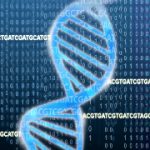CCMB Study on Genetic Diversity and Species Traits
A recent study conducted by scientists at the CSIR-Centre for Cellular & Molecular Biology (CCMB) has shed light on the fascinating relationship between genetic diversity and species traits. By analyzing over 1,200 sequences from a maternally-inherited gene across 128 species, the researchers uncovered intriguing findings that contribute to our understanding of evolutionary biology.
Genetic Diversity and Body Sizes
The CCMB study unearthed an interesting correlation between genetic diversity and body sizes in various species. It was revealed that genetic diversity tends to decrease in species with larger body sizes. While the reasons behind this phenomenon require further investigation, this discovery provides valuable insights into the intricate relationship between physical attributes and genetic composition.
Maternal Care and Genetic Diversity
The study also investigated the influence of maternal care on genetic diversity. Remarkably, species where the mother provides care for the offspring exhibited higher genetic diversity. This finding highlights the importance of parental care in shaping the genetic makeup of a species, potentially leading to enhanced adaptability and resilience.
The Role of Geographical Location
Geographical location played a crucial role in determining genetic diversity. The study observed that genetic diversity was higher in the southern hemisphere compared to the northern hemisphere. This disparity may be attributed to historic climatic stability and lower seasonality in southern latitudes. These factors likely fostered the accumulation of genetic diversity over time.
Geographical Distance and Genetic Exchange
The research demonstrated that genetic diversity increases with geographical distance between individuals. This suggests limited genetic exchange between individuals residing in distant locations. The study’s findings imply that physical separation and limited gene flow contribute to the diversification and distinct genetic makeup of populations inhabiting different geographical regions.
Genetic Diversity as a Measure
Genetic diversity, as examined in this study, serves as a measure of differences in DNA mutations between individuals of a species. These variations are crucial in shaping how organisms respond to environmental changes, influencing their adaptability and ultimately impacting species diversity.
Centipedes: Unraveling Genetic Diversity
Centipedes, ancient arthropods with diverse species traits and biogeographic histories, served as the focal point of the study. The researchers explored genetic diversity among centipedes by analyzing DNA sequences and considering various traits such as body size, vision, and parental care. The unique characteristics and available DNA sequences of centipedes provided an excellent opportunity to investigate the factors influencing genetic diversity in organisms.
Month: Current Affairs - June, 2023
Category: Science & Technology Current Affairs


